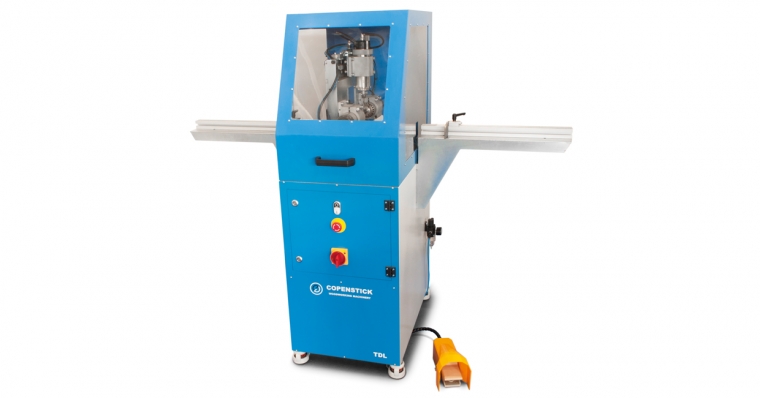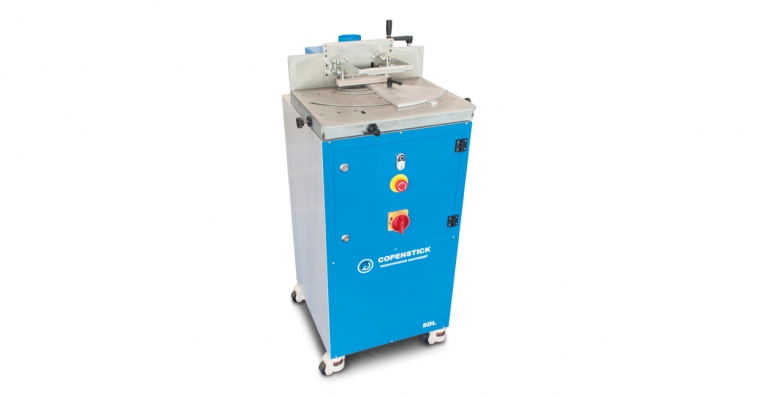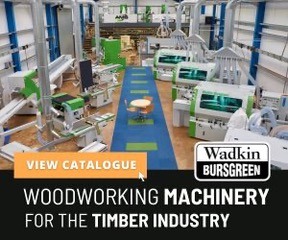Following its impressive showcase of new machinery at this year’s Ligna, Furniture & Joinery Production Magazine caught up with Copenstick’s MD, Adam King, to find out more ...
Could you talk about your experience as an exhibitor at Ligna?
The decision to make Ligna our first exhibition was easy. Ligna has always been a draw for me when it comes to woodworking machinery. I have been visiting for many years as a keen follower of innovation and also for business interests as I once owned and ran my own Joinery business for 27 years. I always felt that if you needed to find a machine for a specific job then it would be showcased at Ligna.
The exhibition was well attended, and we saw a lot of potential customers with good solid leads to follow up after the expo. The enjoyment of being part of Ligna and its success has driven us to book a stand at HOLZ-HANDWERK 2024 Nuremberg and IWF 2024 Atlanta.

How did Copenstick come about?
Copenstick machinery grew from the well-known phrase “necessity is the mother of invention”. In the days of running a timber and door manufacturing company, I needed machines to end-scribe and half-lap joint glazing bars for our timber products, as without them the process is long and tedious.
I went to Ligna to find machinery that could help with our processes but was not satisfied with what was available at the time, which gave me an idea. Having studied BTEC Engineering in my younger years, I decided to start developing machines that would be fit for purpose and built to a standard that could be relied upon.
“The design and quality of the machines are built specifically for heavy use, with easy-to-set-up tooling and controls – this is extremely important for the business owner and the operator”
Tell me something special about the Copenstick machines, what sets Copenstick apart from others?
Copenstick machinery sadly is not immune to competition; there are other companies manufacturing similar machines, but we have some great advantages over all of them. Firstly, its British made! Secondly, the design and quality of the machines are built specifically for heavy use, with easy-to-set-up tooling and controls – this is extremely important for the business owner and the operator.
Our SDL End-scribing machine has the ability to stack tooling and use several different profiles if required. There is 90mm of elevation which allows the tools to be positioned via a simple digital readout, allowing the operator to make a simple profile change with just a few turns of a crank handle.

The TDL Half-lap jointing machine has a small footprint and is semi-automatic in its operation. It can be coupled to a NC positioning stop, linked via ethernet and sent CSV files, which makes it easy for the operator to open a job file and start machining the parts without the need to input any information, saving time and errors.
We have also developed a completely new concept – the UNI. Built specifically for the SME Kitchen Bedroom and Bathroom manufacturer, this machine’s small footprint makes it ideal for smaller shops where the need for a tenoner, tilting spindle moulder, notching machine, biscuit jointer and dovetail jointing machine is essential, but space is limited. There is also provision to fit a small power feed unit which makes machining long workpieces much easier for the operator.
What are your plans for the future?
Our goal long term is to create safer processes for timber window and door manufacturing. This includes tooling solutions for classical machines and larger CNC machinery with economy of timber, time and energy always at the forefront of the development process.








